Scott Morrison has given the green light for the ‘Australian Way’ on climate
Morrison has redefined the middle ground on climate change policy, pushing conservative politics to the edge of breaking point.
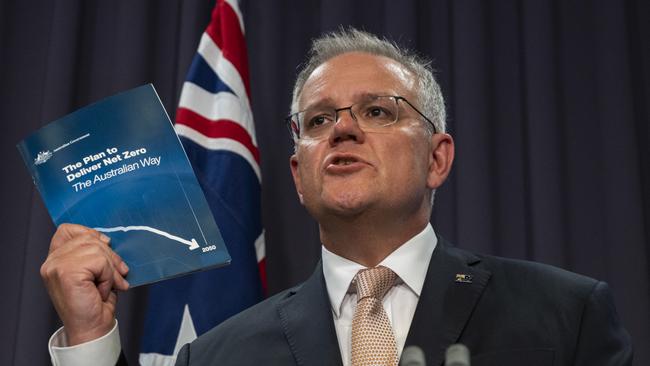
Scott Morrison knows this. That’s why his new policy comes under the branding “The Australian Way”. The singular message from the week – and from the past decade – is that Australian politics puts sharp limits on how this country tackles emissions reduction.
This conclusion is so obvious, yet so denied in our unenlightened climate debate. Morrison has now redefined the middle ground on climate change policy – net zero at 2050 and a projected 35 per cent emissions reduction result at 2030. These are new Australian benchmarks, goals from which there is no turning back no matter how shrill the outcry from conservative populists.
In this story, there are two unshakeable and contradictory realities.
First, it is an achievement within Coalition politics, beyond the imagination 18 months ago, and delivered only after taking the Coalition to the brink of a great smash. In its trauma, the Nationals were almost split down the middle but revealed their true heart – they have no future outside a Coalition partnership.
Morrison won the transition both without a Liberal Party revolt and without losing his leadership, reversing the cycle of the past 12 years.
Second, the world will say “thanks” or, in the case of Boris Johnson “heroic”, but then say “it’s not enough”.
The benchmark of keeping the rise in global temperatures below 1.5C means that more ambition is demanded from all nations and, by this criteria, Australia remains a laggard.
Morrison goes to Glasgow having done enough to prevent Australia being labelled an outcast but not enough to prevent our effort being labelled as inadequate.
This is not going to change. Remember the great Kevin Rudd dream of Australia “leading the world”. Our energy structure and our politics meant it was never going to happen. Remember, too, that Malcolm Turnbull during three years as PM faithfully adhered to Tony Abbott’s 26-28 per cent emissions reduction target, despite its deficiency.
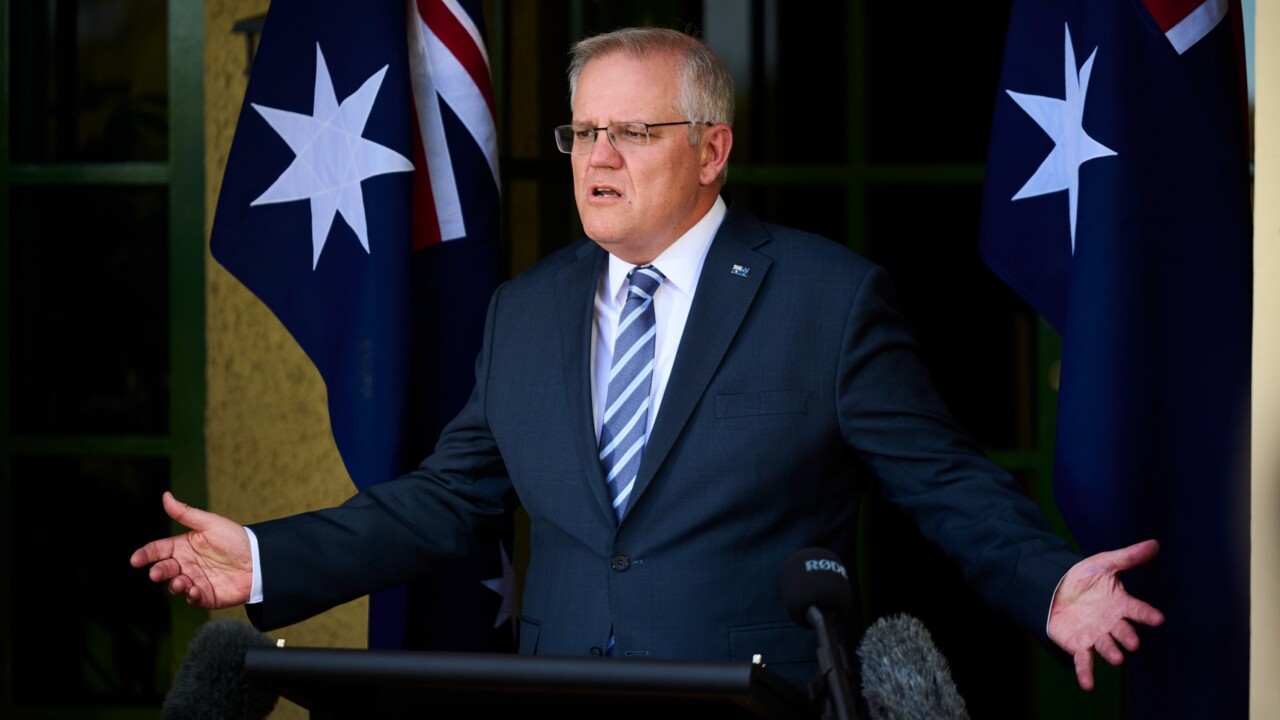
In his 2050 quest this week, Morrison stretched conservative politics to the limit. Critics claiming he should have secured a more ambitious 2030 target beyond 35 per cent live in a fantasy land. That stance would have ruined any hope of a deal with the Nationals, would almost certainly have resulted in Nationals ministers quitting, probably would have severed the Coalition, cast Morrison as a failed leader of the conservative side, provoked a backlash from his base, and doomed any re-election prospect for the government.
Critics who ask prime ministers to commit electoral suicide are merely asking to be rebuffed.
The bigger lesson is apparent – if this is the limit of conservative politics, then it falls far short of the emissions reduction policy demanded by capital markets and global opinion. As for Labor, don’t expect Anthony Albanese to lose yet another election with an exaggerated climate stance.
Opposition environment spokesman Chris Bowen has made it clear that Labor will have more ambitious medium-term targets than the government’s 35 per cent but not dangerously more ambitious. “We deliberately held back on our position to see if the government could produce a policy capable of ending the toxic culture war on climate change,” Bowen told Inquirer. “Unfortunately, they have fallen woefully short of anything that might have made such optimism viable.”
There will be no bipartisanship on the medium term. Again, that’s because of politics. It would be folly for Labor to fall into line with Morrison’s 35 per cent projection. That would be an act of weakness, declaring no difference with the Coalition at either 2030 or 2050. It would betray Labor’s history, aspiration and supporters. And it would provoke an assault on Labor from the left, just as Morrison now faces an assault from the right in the form of Clive Palmer and Pauline Hanson.
People who think climate change politics in 2022 will be a repeat of 2019 are deluded. The caravan has moved on. Big corporates, in the form of the Business Council of Australia, call for a 46-50 per cent target at 2030. Bowen has stacks of cover for a target that goes above Morrison and still stays safe.
Labor’s target will be below the NSW Liberal government’s 50 per cent. If Morrison runs his scare, the first question will go to NSW Liberal Premier, Dominic Perrottet: “Tell us why 50 per cent is so good for Australia.”
Climate change is being redefined in Australian politics. Neither Morrison nor Bowen talk about “the great moral challenge”. It is turning into an issue of economic and energy restructuring. By making 2050 bipartisan, Morrison has surrendered the optics that make a big scare viable. This is not to say he won’t try – but Morrison’s re-election strategy is obvious.
He will run on the economy. He will redefine climate change as an economic challenge. Any campaign parallel will be 2004 when John Howard, under attack over mistrust, did a pivot and asked “who do you trust” on the economy. Morrison will argue that he has steered the economy through the Covid-induced global recession and can steer the economy through the net-zero climate change adjustment.
At this point, the politics diverges from reality.
Australia is both an emissions-intensive producer of coal, gas and agriculture yet a rich world consumer keen to promote clean energy. Because of its dual nature, no political leader will succeed without pitching to both constituencies. Morrison will repudiate global demands to shut down coal-fired power at 2030 or damage the beef industry by agreeing to 30 per cent methane cuts by the same deadline.
Now that Morrison has accepted net zero, he feels able to enunciate what he calls The Australian Way, saying this country will tackle climate change its way, not the way other nations demand. It is a pitch to sovereign nationalism. Morrison will make this argument at Glasgow. His language this week points to a PM who, having embraced net zero, is now ready to defy much of the climate orthodoxy.
This is typical Morrison. It is finding the middle position. The risk is he fails to persuade city suburban voters of his emission-reduction credentials and fails to persuade the regions he is protecting their traditional industry.
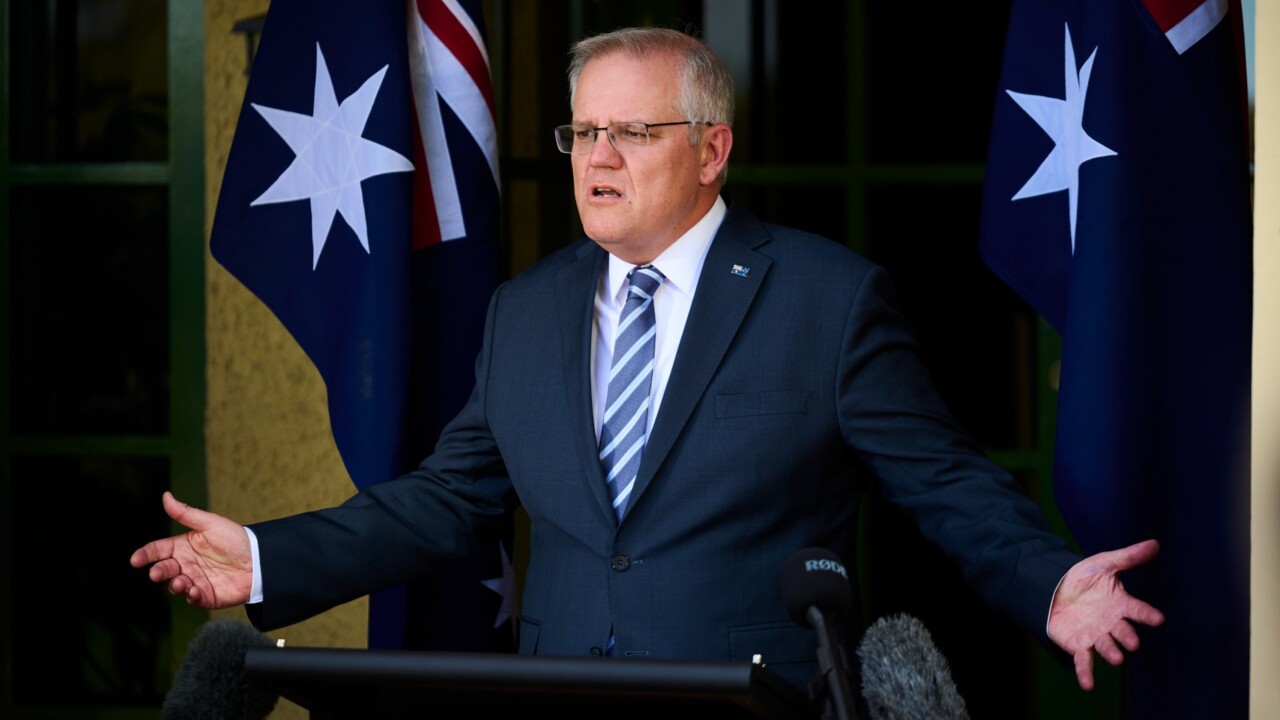
“We won’t be lectured by others who don’t understand Australia,” Morrison said. “We will not support any mandate, domestic or international, to force closure of our resources or agricultural industries. The Australia way of life is unique. Australians will set our own path to net zero by 2050.”
The key to Morrison’s agenda is that he accepts the irresistible demand of capital markets and global opinion on net zero at 2050 but he doesn’t accept their view on how to get there – he advances a unique Australian Way, summarised as “technology not taxes”.
The problem with the government’s Long-Term Emissions Reduction Plan released this week is its perpetuation of the myth that Australia can get to net zero totally pain free. Net zero looms as a nirvana, just short of the Garden of Eden.
It is a world devoid of new or higher taxes. No industries, regions or jobs will be put at risk. The pledge is specific: “No Australian jobs will be lost” due to the policy. Households, businesses and the broader economy will not be hurt. It will not shut down coal or gas production or require displacement of productive agricultural land. National income per person will increase by almost $2000 in 2050 compared with a “no action” scenario. Energy costs will not rise and Australia will remain a leading, competitive energy exporter.
How good is this! What, you might ask, has the furious debate been about? Why were the Nationals so upset?
The answer, again, is politics. The legacy of the defeat of carbon pricing in Australia – sealed with the 2013 election victory of the Abbott government – is that Coalition and Labor politicians preach climate change action but tell the public it won’t cost and it won’t mean higher taxes, because they know the public, particularly after being battered by Covid, won’t tolerate any real pricing or income pain in the cause.
The truth, by contrast, is that net zero represents the most serious restructuring of the Australian economy for decades. It won’t come cost-free. The adjustment for many Australians in regional areas will be tough. The Nationals have every right to be concerned about the regions, but should have devised a regional plan years ago. Getting the balance right in shifting out of the booming developing world demand for Australia’s fossil fuels while generating the huge domestic investment needed in renewables and clean energy defies the best laid plans.
There is one certainty: the gulf between the demands of the science to cut emissions and the performance of nations will only widen in the years ahead. Political disputes over climate are going to get far worse and the demands will infringe more on daily life – on travel, transport, diet, lifestyle, home appliances and power, and possibly human freedoms.
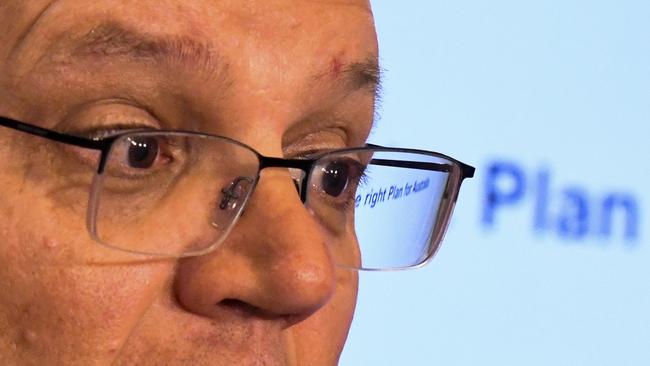
The government’s plan is a policy-free zone. It envisages instead that affordable low-emission technologies will emerge and do the job. In terms of emission reductions, it predicts 40 per cent coming from the technology investment road map, 15 per cent from global technology trends, 15 per cent from future technology breakthroughs and 10-20 per cent from international and domestic offsets. The plan is right about technology. What’s missing are the price and investment levers to channel investment into low-emissions technology. It says the government will invest more than $20bn in this quest by 2030 and envisages that $80bn will come from private investment and state governments.
Labor’s plan, likely to be released before Christmas, will avoid Bill Shorten’s mistake from 2019. It will offer a policy framing, not just rely on technology, and provide the costs involved in getting to its targets.
The bottom line is Australia’s climate wars are not over but they are diminished. Net zero at 2050 is now bipartisan – the policy of the Liberal, Labor and Nationals parties, although the Nationals just got there in last week’s party meet where views split 12-9 in favour but with leader Barnaby Joyce and ministers Bridget McKenzie and Keith Pitt all speaking against.
For Morrison, only one thing counts – the Nationals partyroom delivered his policy within a continuing Coalition government. “This plan is 100 per cent supported by our government,” Morrison said last Tuesday. “It was resolved by cabinet last night. The plan has the full support of our coalition partners.”
But it doesn’t. It has their majority support. Influential Queensland Nationals senator Matt Canavan has broken away, attacked the plan as “bad” and will campaign against it. Joyce, as Deputy PM, will campaign for net zero but everyone knows he spoke against the plan in the partyroom. What credibility will Joyce have campaigning in regional Queensland when Pauline Hanson, Clive Palmer and Campbell Newman brand him a sellout?
The fight over the populist right vote in regional Australia may decide Morrison’s fate at the election. The minor parties to the right of the Nationals, along with their media backers, are fighting against net zero as their cause sinks into the death throes.
Morrison moved to net zero not to save the planet but to save Australia’s economy from serious investor harm. The accusations of betrayal against him from the more populist conservatives must prompt the question: how will helping Labor into office advance your cause?
At Glasgow, Morrison will face demands he should have done more at 2030. The critics are right. Most experts (not Bill Gates, whom Morrison quotes) say net zero at 2050 demands a higher target at 2030 since more action earlier manifestly assists the lower emissions goal. Such logic, however, is unobtainable within Coalition politics that Morrison had already stretched to the limits. In climate change, the politics of an ideal world doesn’t exist – just ask Joe Biden and Xi Jinping. In response to the criticism he endures at Glasgow, there are stacks of ludicrous hypocrisies that Morrison could highlight.
Let’s hope he reminds Biden that Donald Trump gave notice to withdraw America from the Paris Accords. The US has scant moral capital on climate change. Biden’s struggle to get his climate change measures through the congress reveals that domestic US politics is a challenge running far beyond Australia.
If impolite, Morrison could point out the method of “ambitious targets and failed delivery” practised by so many nations. Australia doesn’t do that, and its post-2005 performance exceeds the US, Japan, Canada and New Zealand.
If he were more impolite, Morrison might say the European obsession about border protection tariffs to punish nations not showing the “proper” climate change commitment is a classic rich world arrogance, guaranteed to alienate other countries with the secondary motive of resurrecting protectionism and further damaging an already damaged global trade system.
In this context, the ultimate conclusion – sure to drive the climate change lobby out of its mind – is to support in principle what Morrison now calls The Australian Way of reducing emissions. This should recognise the net-zero goal at 2050, implicitly recognise we need to do far more at 2030 but devise policies and responses that meet our particular economic, energy and political needs.


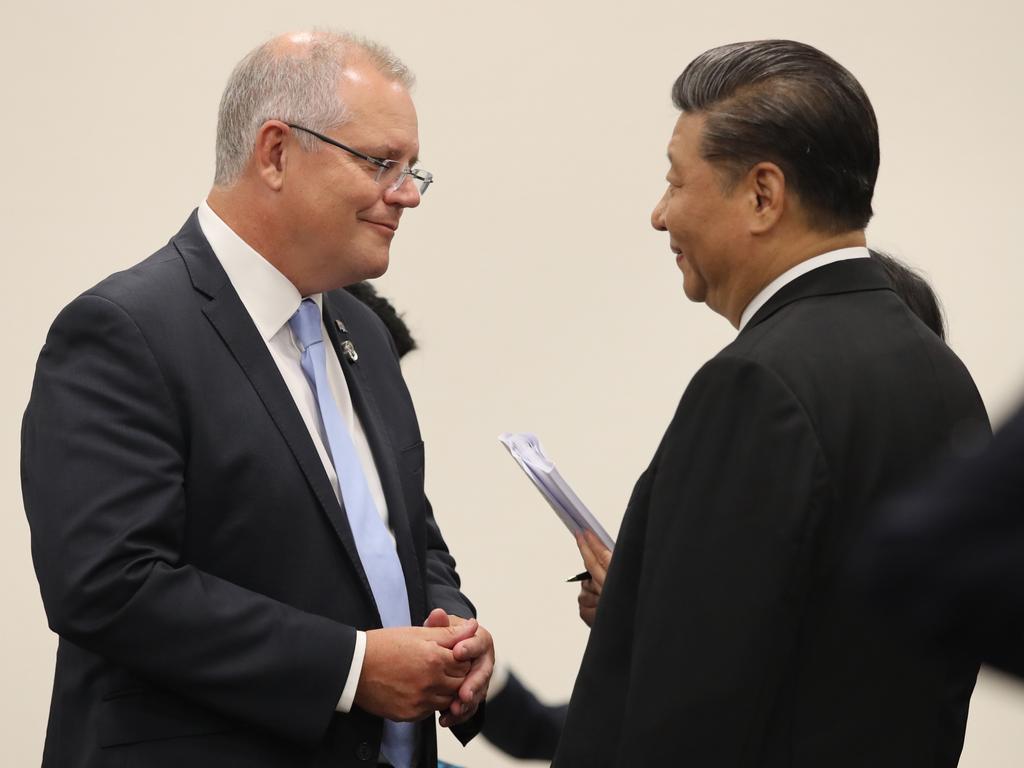
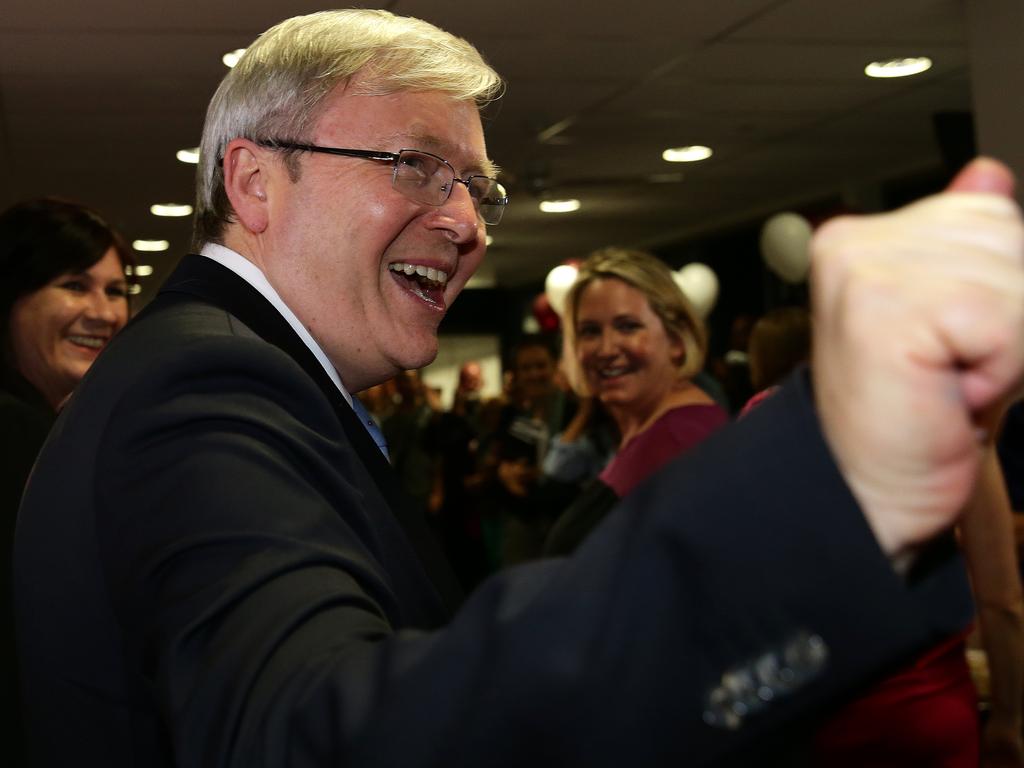
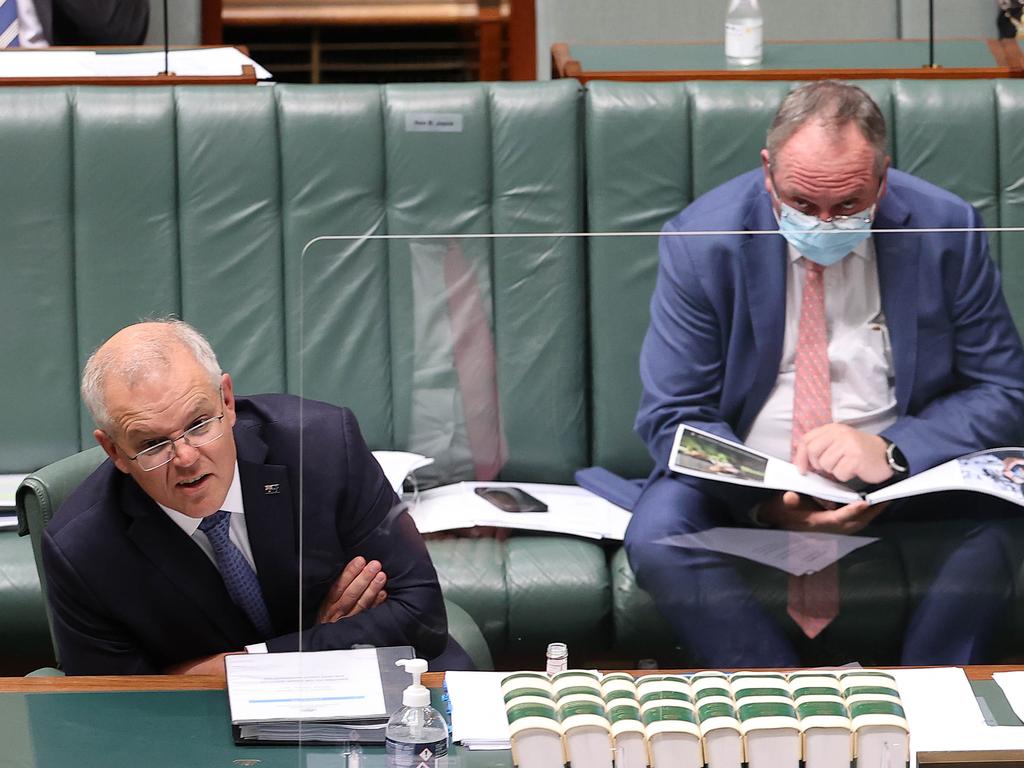
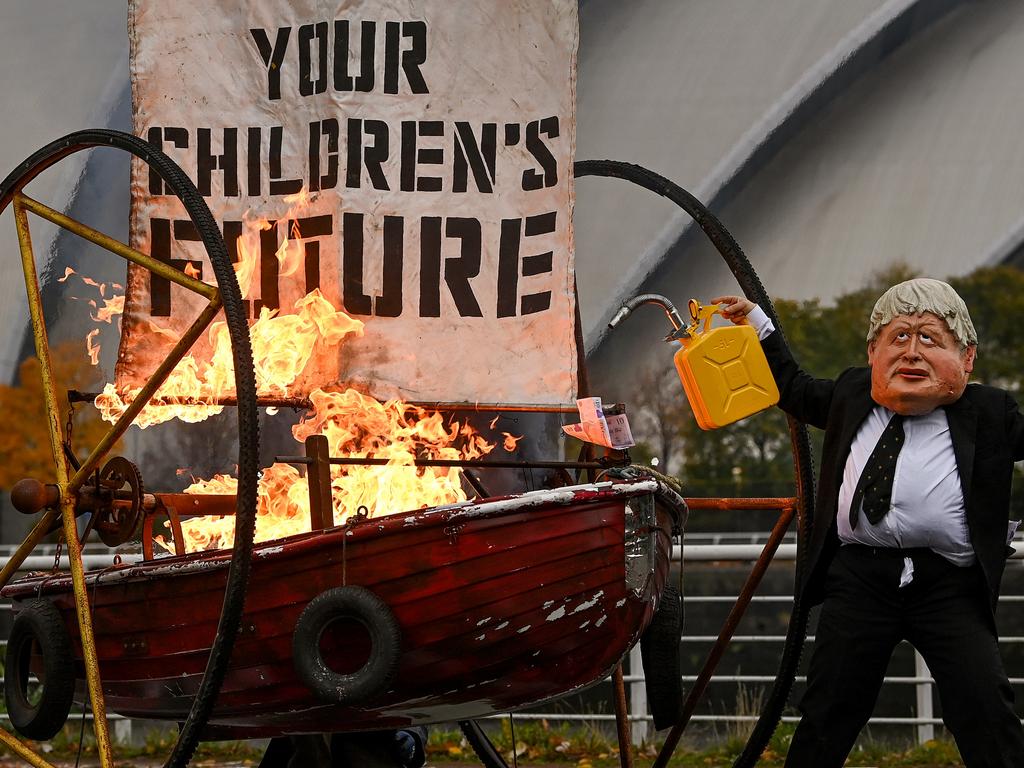


This week, the Morrison government drove conservative politics to the edge of breaking point to win new advances on climate change goals – yet these outcomes will satisfy neither the markets nor global leaders, guaranteeing Australia stays under permanent pressure into the future.